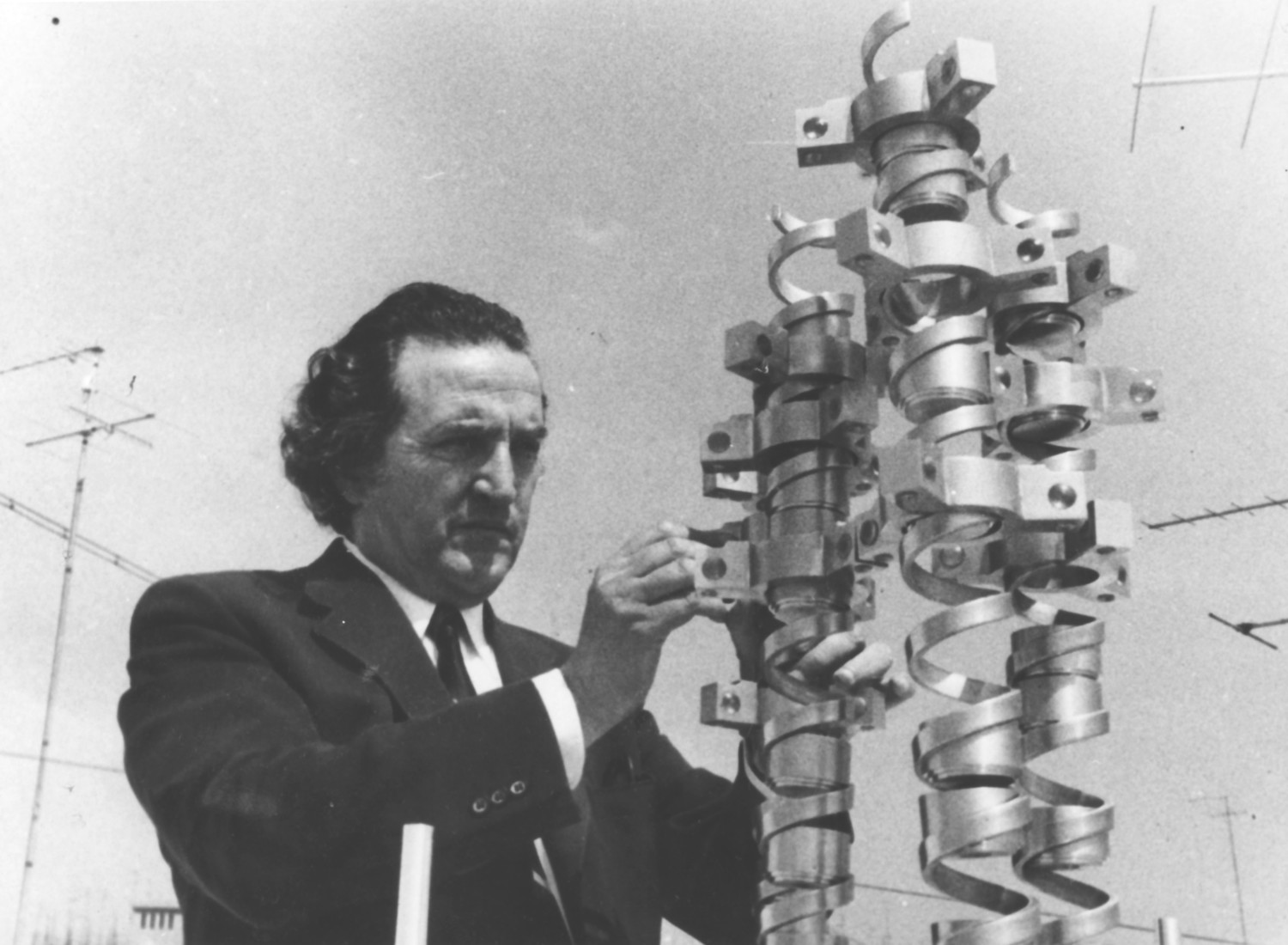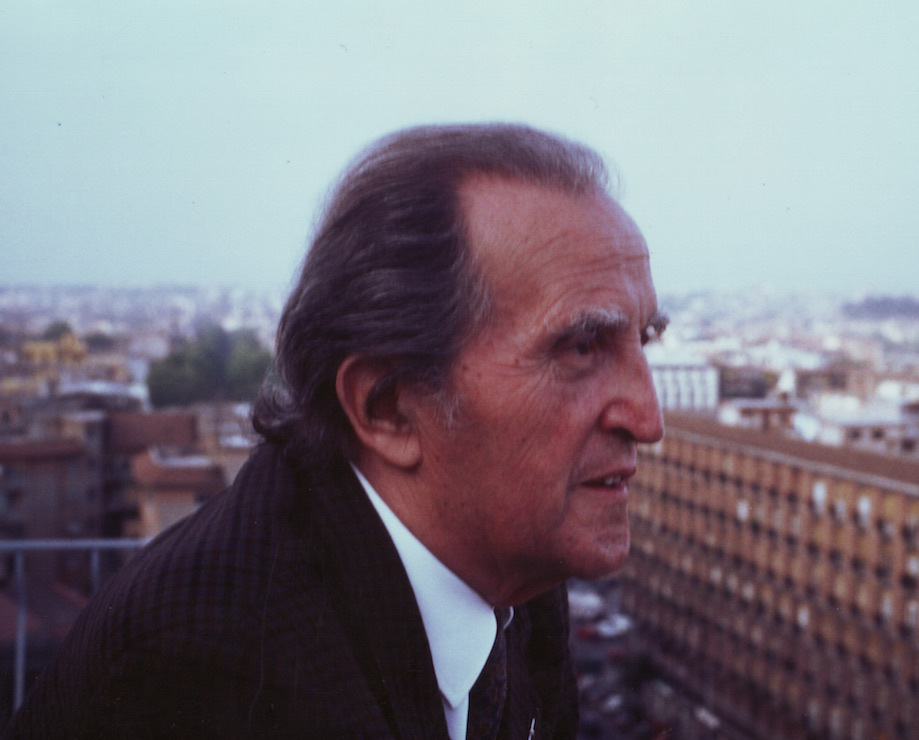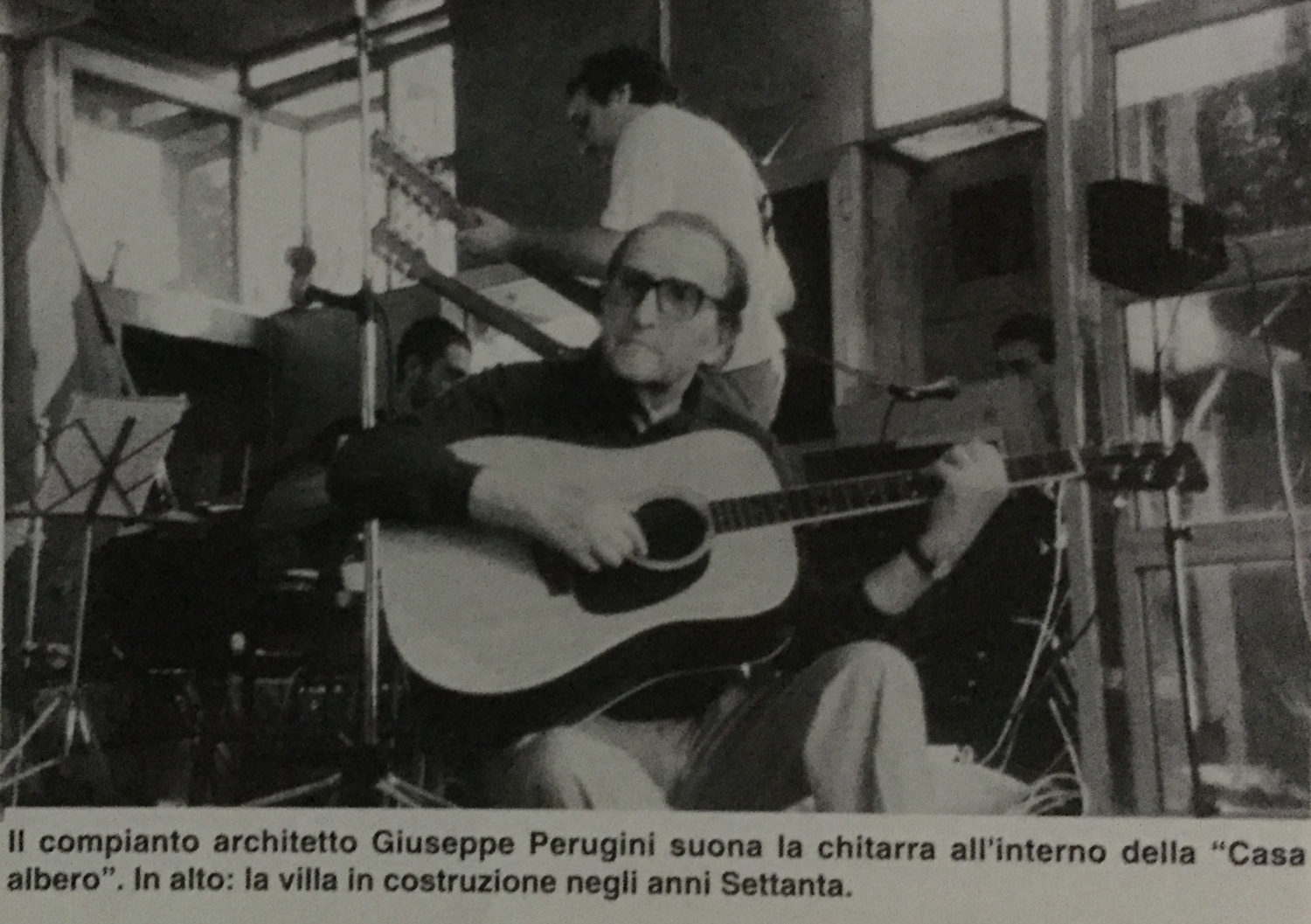

(Buenos Aires 17 March 1914 – Rome 19 September 1995)
Giuseppe Perugini arrived in Rome from Argentina in the early Thirties with the intention of studying art. He first enrolled to study sculpture but after an accident was no longer able to continue his studies in this subject.
He came in contact with the still vital Avant-gardes and with the almost clandestine rationalist ideas of the time. No longer being able to follow his passion for sculpture he enrolled in that faculty of Architecture. In these years of study, he has the opportunity to attend the Masters of the Roman School, such as Adalberto Libera. After graduating in 1941, he immediately began his own teaching and research activity, a direct expression of an architectural creed. In his career he was awarded the title of Officier (le l’Ordre de Léopold of Belgium (for the Italian pavilion at Expo 1958), in 1969 the Henry Bacon Medal for Memorial Architecture of the American Institute of Architects (for the Monument of the Fosse Ardeatine) and the Inarch-Finsider Award in 1967 for the innovations introduced in the design of steel housing structures.
A further demonstration of his desire to experiment, he was among the first scholars to propose, in the ’60s, the use of computers as instrument authorizing modular building elements.I
During his career he presented a series of projects to international competitions, such as the circular bridge over the Strait of Messina, the Plateau Beaubourg tower-helix, born from the integration of particularly expressive signs and avant-garde technological choices. And others, such as the well-known “cybernetic hospital” and the UNIDO headquarters in Vienna, where the function is privileged through the decomposition and recomposition of cells mentions aggregated electronically according to the actual needs, thus eliminating the conventional dispersions of the traditional architectural object.
In all the projects, however, the will to express the message that every work must contain, making its symbolic and psychological values as clear as possible, can be read. Also the desire to deepen the dialogue between architecture and the technical-scientific process exhibited with a language that can also be understood by the non-initiated. Moreover, the dialectical confrontation and the collaboration of choruses of the prominent personalities of the culture of our age such as Neutra, Bakema, Moore, Arp, Mirko, and Cagli contributed to strengthening its original rationalism leading to more and more advanced abstractions until the transformation into «Symbol» of each of its design ideas.
Thus his first work, the Monument to the Fosse Ardeatine in Rome, at the same time architectural structure, symbol and memorial, appears as a “unique tomb”. While the buildings of the Judicial City were configured as a true “citadel”, inspired by the “urban” and itinerant aspect of the justice of the Classical Age. Also belonging to the same ideology are the church-sacrarium of Piedimonte Sari Germano, the aforementioned bridge of Messina – a tangible emblem of the connection between the two shores, the “kinetic explosion” of the project of an exhibition pole in the Fortezza da Basso in Florence, the binomial matter-music of the Memorial Fermi prism in Chicago. So the very recent cubic monolith dedicated to Natalino Sapegno, the “dynamism” of the project for the Turin airport, the “tree-house” in Fregene, are all works that grant nothing to the form itself, to the compositional occasionality, and from which a “stylistic” continuity and a rigorous method of interpretations of the space expressed, under the aegis of geometry, with “pure” materials among which steel and reinforced concrete prevail. But this particular design “method” does not end with strictly architectural or monumental production, so much so that in urban planning interventions, in motorway sections – just think of the “knot” of Restoration along the Palermo-Catania or even in the restoration of buildings of particular value – the Muti-Bussi palace or the Villa Mondragone – the desire to reveal through the architectural medium a meaning derived from the matrices themselves of the work is always easily recognizable. As for his socio-publicistic activity, he was called immediately after the war to participate in the initiatives promoted by the Ministry of Public Administration. for the formulation of legislation aimed at standardizing the reconstruction processes of the country. In subsequent years, the board of directors of I.S.E.S., Contributes to the recovery of the earthquake zones of Belice. It is therefore part of the Consulta dei Ministero P.I. for school building regulations and, between 1962 and 1966, as President of the Order, the Architects of Rome and Lazio participated in the debate on the equivalence of professional qualifications within the EEC.
He is also president of the Opera Universitaria, a member of the commission in numerous national and international competitions, a member of the building commission and the commission for the study of the new urban structure of the metropolitan area of Rome, as well as the founder of the A.P.A. – Association for Organic Architecture – and the Circolo di Roma.
Among his writings we find essays and works dedicated to the analysis of contemporary architectural culture (La forma in architettura, Rome 1953), to the comparison between theory and built Architecture of Borromini in the church of S. Maria dei Sette Dolori, Rome 1959 and Borrominian models in S. Giovanni dei Fiorentini, Rome (1962), at Michelangelo’s intervention in the Campidoglio in AA.VV., Michelangelo’s Campidoglio, San Luca Academy, Rome (1965) and the potential applications of electronic means in architecture.


Image from Qui Fregene no42, 1996